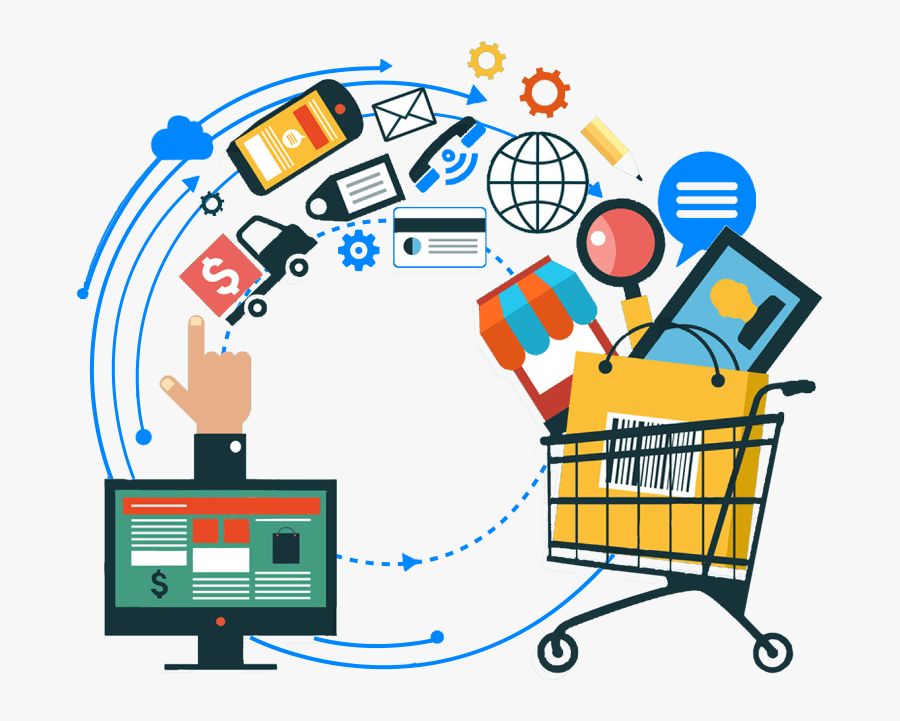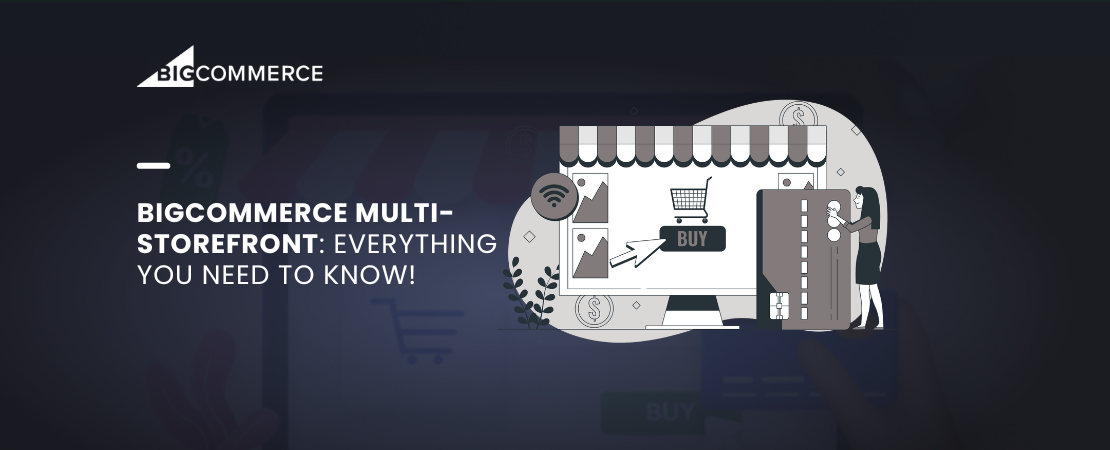If you are planning to incorporate excellence and innovations into your ecommerce business, 2025 is yours! It promises to bring forth an array of trends that will reshape the way online retailers operate, especially by engaging and catering to their audience’s needs.
From leveraging augmented reality for personalized shopping experiences to incorporating social commerce, the dynamics of ecommerce are set for a transformative journey this year.
In this blog, let’s start that journey by learning about the top trends and providing insights into how BigCommerce’s innovative solutions position businesses high in online retail.
Leading Ecommerce Trends of 2025 in the BigCommerce Industry
1. Hyper-Personalization
Considering the age of information we live in, customers do crave tailored experiences. But has the time to spend hours figuring out what’s meant for them and what’s not? That’s where ecommerce platforms work best by leveraging advanced algorithms.
They analyze user behavior, preferences, and purchase history to provide hyper-personalized recommendations. This way, the platform’s robust personalization features help businesses create a customized shopping journey for each visitor.
2. AI and Machine Learning Integration
Gone are the days when artificial intelligence and machine learning were considered hard to approach. Yes, today, they are no longer buzzwords but rather an integral component of ecommerce personalization.
Platforms like BigCommerce can predict customer preferences, optimize product recommendations, and enhance the shopping experience through these technologies. Also, in 2025, we should expect a deeper integration of AI and ML in shaping personalized interactions.
3. Omnichannel Personalization
Before getting into omnichannel personalization, it is essential to know what omnichannel is. It is a customer-centric approach to buying via either physical or online means.
Modern consumers interact with brands across various channels, from websites to social media and mobile apps. This is the reason why adaptive approach ensures that personalization extends beyond the online store. Ultimately, this creates a unified brand experience for customers across multiple touchpoints.
4. Dynamic Pricing Strategies
There is no denying the fact that pricing plays a huge role in deciding the future of growth. This is exactly why dynamic pricing is gaining momentum in ecommerce as retailers recognize its potential to optimize revenue.
Thanks to BigCommerce’s tools, businesses can implement dynamic pricing strategies. They are based on real-time market conditions, customer behavior, and competitor pricing. As a result, it ensures competitive pricing and personalized discounts, enticing customers while maximizing profits.
5. Personalized Content Delivery
We all know content is king. In other words, content is a powerful tool in the ecommerce industry. However, delivering personalized content enhances engagement like never before.
From product recommendations to tailored blog content, this platform enables businesses to craft a unique experience for each visitor. Therefore, we expect 2025 to witness a surge in the use of personalized content. Keeping customers engaged and informed throughout their journey is a need of the time.
6. Enhanced Customer Segmentation
Effective personalization hinges on understanding customer segments. However, it becomes easier with the features offered by BigCommerce.
The advanced segmentation tools allow businesses to categorize customers based on demographics, behavior, and preferences. This multipurpose approach leads to targeted personalization. Eventually, it improves the relevancy of promotions, discounts, and product recommendations.
7. Privacy and Consent Considerations
With increasing concerns about data privacy, businesses need to differentiate between personalization and respecting customer privacy. This refers to the fact that the platform highlights the fine line between them. The store emphasizes transparency and provides tools for businesses to manage customer consent effectively.
That is exactly why, with the evolving ecommerce landscape in 2025, we expect a continued focus on balancing personalization with privacy considerations.
8. Voice Commerce Integration
One of the most powerful trends going to take over the world of BigCommerce is voice commerce capabilities. As voice-activated devices become more prevalent, ecommerce is adapting to accommodate voice commerce.
BigCommerce is at the forefront of this trend, integrating voice-activated shopping experiences. In 2025, expect further advancements in voice commerce personalization, making the shopping journey even more intuitive and convenient.
Read Also: BigCommerce Headless: Exploring Why It’s Required for eCommerce Businesses
Real-World Examples of Ecommerce Personalization
Personalization Beyond Product Recommendations
Example: Home goods store “Cozy Nest” uses BigCommerce’s integration with a personalization platform to offer dynamic search results based on individual preferences. They also use dynamic pricing to offer discounts on slow-moving items for specific customer segments.
Result: 15% improvement in search conversion rate and 10% reduction in inventory carrying costs.
BigCommerce Feature: Integrations with personalization platforms and dynamic pricing
AI-Powered Personalization
Example: Outdoor apparel store “Pathfinder” uses BigCommerce’s AI to analyze past purchases and browsing behavior. They then recommend complementary gear (e.g., hiking boots for someone looking at a backpack) and personalized email campaigns based on interests.
Result: 20% increase in average order value.
BigCommerce Feature: Product recommendations, smart carts, and dynamic content
Hyper-Personalization Beyond the Individual
Example: Beauty brand “Blush & Bloom” segments customers by skin type and makeup preferences. They use BigCommerce’s segmentation tools to send targeted email campaigns with personalized product suggestions and special offers.
Result: 35% increase in click-through rates on email campaigns.
BigCommerce Feature: Customer groups, segments, and targeted marketing campaigns
Bottom Line
In light of ecommerce personalization recently undergoing a transformative phase, BigCommerce development services stand as a reliable partner for businesses willing to stay firm in this dynamic landscape. From hyper-personalization and AI integration to omnichannel strategies and dynamic pricing, the top trends are geared toward providing customers with a tailored and seamless shopping experience.
Read Also: Tips to Hire the Perfect BigCommerce Development Company for Simplified Ecommerce Operations
As we move ahead, we expect BigCommerce to continue shaping the future of ecommerce personalization. In fact, with its extensive features and integrations, BigCommerce is enabling ecommerce businesses to implement effective personalization strategies and stay ahead of the curve in 2025 and beyond.



